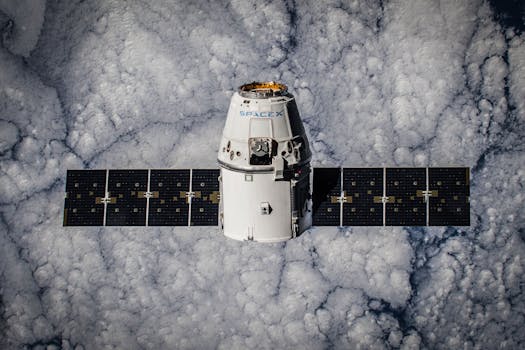The Future of Satellites: Revolutionizing Global Connectivity with WordPress

The Future of Satellites is a rapidly evolving field that is transforming the way we communicate, navigate, and understand our planet. As we continue to push the boundaries of space exploration, satellites are playing an increasingly crucial role in enabling global connectivity, advancing scientific research, and driving innovation. In this article, we will delve into the latest developments in satellite technology and explore the exciting possibilities that the future holds.
With the rise of WordPress, a powerful content management system, we can now create and manage complex websites and applications that showcase the latest advancements in satellite technology. From satellite imaging to space exploration, WordPress provides a robust platform for sharing knowledge, collaborating with experts, and inspiring new generations of space enthusiasts.
Advancements in Satellite Technology
In recent years, we have witnessed significant advancements in satellite technology, from the development of smaller, more efficient satellites to the creation of advanced propulsion systems. Nanosatellites, for example, are tiny satellites that weigh less than 10 kilograms and are capable of performing a wide range of tasks, from Earth observation to communication relay. These small satellites are not only cost-effective but also offer greater flexibility and agility, enabling them to be deployed quickly and efficiently.
Another area of significant advancement is in the field of satellite propulsion. Traditional propulsion systems rely on chemical reactions to generate thrust, but new technologies such as ion engines and hall effect thrusters are being developed to provide more efficient and sustainable propulsion. These advanced propulsion systems enable satellites to maintain their position and trajectory over longer periods, reducing the need for frequent orbit adjustments and increasing their overall lifespan.
Global Connectivity and the Internet of Things (IoT)
The future of satellites is closely tied to the concept of global connectivity and the Internet of Things (IoT). As we continue to rely more heavily on connected devices, satellites will play a vital role in enabling communication between these devices and the rest of the world. Low-Earth Orbit (LEO) satellites, in particular, are well-suited for providing global connectivity, offering lower latency and higher throughput than traditional Geostationary Orbit (GEO) satellites.
The IoT is a network of physical devices, vehicles, home appliances, and other items that are embedded with sensors, software, and connectivity, allowing them to collect and exchange data. Satellites will be essential in enabling the IoT, providing the necessary connectivity and infrastructure to support the vast amounts of data being generated by these devices. With the help of WordPress, we can create complex IoT applications that integrate satellite connectivity, enabling new use cases such as smart cities, precision agriculture, and environmental monitoring.
Challenges and Opportunities
While the future of satellites holds tremendous promise, there are also significant challenges that must be addressed. One of the major concerns is the growing problem of space debris, which poses a significant threat to the long-term sustainability of space exploration. As the number of satellites in orbit increases, so does the risk of collisions and the accumulation of debris.
Another challenge is the need for standardization and regulation in the satellite industry. As new technologies and applications emerge, there is a growing need for common standards and regulatory frameworks to ensure safe and responsible operation. WordPress can play a crucial role in facilitating collaboration and knowledge-sharing among industry stakeholders, helping to drive the development of standards and best practices.
Despite these challenges, the future of satellites is full of opportunities for innovation and growth. With the help of WordPress, we can create new applications, services, and business models that take advantage of the latest advancements in satellite technology. From space tourism to satellite-based broadband, the possibilities are endless, and the potential for transformation is vast.




